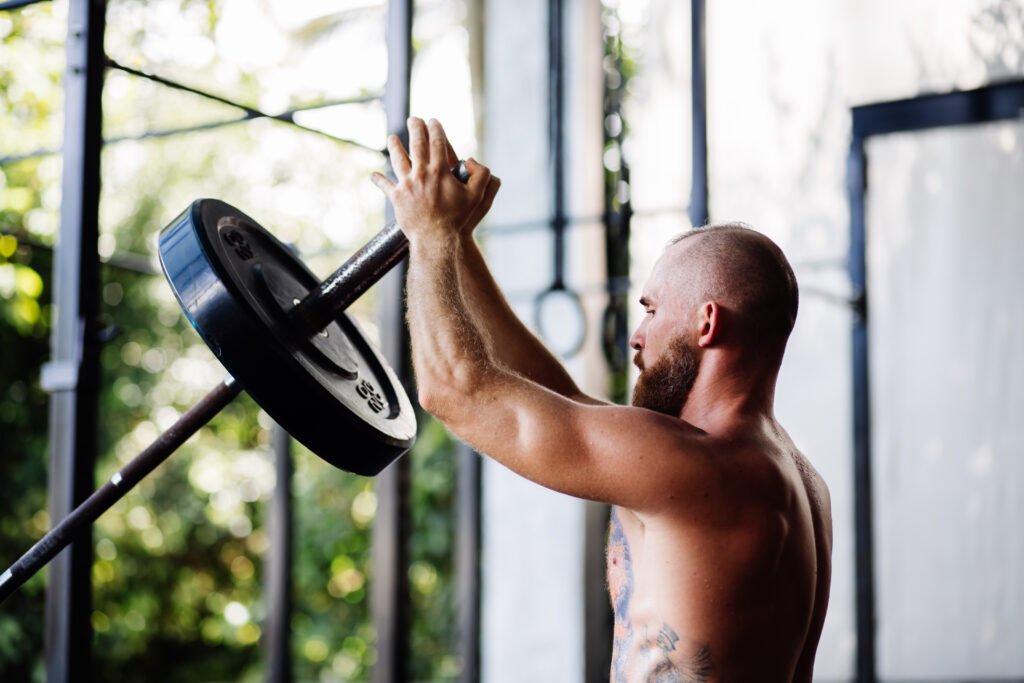Understanding Strength Plateaus
What a Plateau Really is
A strength plateau is a period where your progress in lifts or performance stalls despite consistent training. It is not a sign of failure; it is a normal physiological response to repeated stress. Every lifter, from beginners to elite athletes, encounters these types of periods. The key difference between those who overcome plateaus and those who don’t lies in understanding why they occur and implementing targeted strategies to progress.
Common Signs of Plateaus
Signs of a plateau include stagnation in weights lifted, inability to increase reps, slower recovery between sessions, persistent fatigue, and a lack of visible strength gains over several weeks. Tracking these markers in JEFIT allows athletes to quantify their performance trends, identify plateaus early, and respond with adjustments in programming rather than guessing what to do next.
Why they are Normal
Physiologically, the body adapts to stress efficiently. Initial rapid gains eventually slow because muscles, tendons, and the nervous system have adapted to current workloads. Plateaus indicate the body has become efficient at handling the imposed stress, signaling that simply repeating the same program will no longer stimulate adaptation.
Causes of Strength Plateaus
Adaptation Outpaces Programming Changes
One of the main causes of plateaus is that the body adapts faster than the stress is increased. Beginners see linear gains because any consistent stress is enough to drive adaptation. Intermediate and advanced lifters require more sophisticated adjustments, such as manipulating intensity, volume, frequency, and exercise selection to continue progressing. Without changing the stress type or structure, progress stalls.
Limited Overload Methods
Many lifters rely solely on increasing the weight on the bar as the only form of overload. Strength, however, can be increased using multiple levers: volume, reps, tempo, range of motion, rest intervals, frequency, exercise variation, and fatigue management. When only one lever is used, the body adapts quickly, creating stagnation. Programs tracked in JEFIT that rotate stress types and variables consistently outperform those relying on linear loading alone.
De-Adaptation Between Phases
Periods of insufficient stress or poorly structured transitions between training blocks can cause de-adaptation. Even short breaks without sufficient stimulus can reverse gains. Data from JEFIT shows users who consistently track and progress week over week maintain higher year-over-year strength increases compared to those who sporadically train or fail to track load changes.
Non-Linear Human Adaptation
Human strength adaptation does not progress linearly. Weeks of growth may alternate with flat or regressive weeks. Plateaus are often misinterpreted as failure rather than normal adaptive cycles. Recognizing this pattern prevents frustration and encourages proper long-term program planning.
Strategies to Break Plateaus
Shift from Linear to Cycling Overload
Beginners benefit from linear progression, but intermediates require periodized or wave-loading approaches. Cycling stress types—such as alternating heavy singles with volume blocks—ensures the nervous system and musculature are continually challenged in varied ways. Programs that rotate intensity and volume within JEFIT demonstrate superior outcomes compared to linear-only approaches.
Prioritize Neural Skill
Strength is as much neural adaptation as muscular. Practicing heavy lifts with perfect form develops bar path efficiency, coordination, and recruitment patterns. Without maintaining skill, increased muscle mass does not translate effectively into strength. Including high-intensity singles, doubles, or triples even during hypertrophy-focused periods preserves and develops the neural component of strength.
Weekly Microcycle Goals
Rather than chasing daily PRs, focus on weekly progression markers. Improving one metric per week—such as adding a rep, a small load increase, or reducing reps in reserve (RIR)—constitutes progressive overload. JEFIT tracking allows users to visualize weekly improvements, reducing reliance on daily subjective performance judgments.
Identify Stall Type and Apply Targeted Adjustments
Plateaus can be categorized into tension stalls (cannot add weight), volume stalls (cannot complete prescribed sets), skill stalls (form deteriorates under load), and fatigue stalls (performance decreases due to recovery deficits). Each type has a specific corrective approach: tension stalls respond to volume increases, volume stalls benefit from intensity focus, skill stalls require low-rep technical practice, and fatigue stalls need increased recovery or reduced density. Accurately identifying stall type is critical for targeted interventions.

Implementing a 4-Week Plateau Break System
Week 1: Skill Focus
Focus on low volume, low fatigue lifts to reinforce proper technique and bar path. Main lifts should be performed at moderate intensity with low reps. Accessories should be minimal to reduce fatigue while maximizing neural adaptation.
Week 2: Volume Expansion
Increase hypertrophy volume at moderate intensity. Main lifts are performed with higher reps, and accessory work is expanded to improve total stress tolerance. This phase enhances the body’s capacity to handle greater overall workload in subsequent weeks.
Week 3: Stress Convergence
Combine intensity and volume to convert accumulated hypertrophy and neural skill into strength expression. Main lifts involve moderate reps at higher intensity, and accessories are scaled appropriately to maintain balance without excessive fatigue.
Week 4: Deload
Reduce intensity and volume to promote recovery and supercompensation. This phase consolidates gains and allows the nervous system, tendons, and muscles to adapt fully, setting the stage for the next progression block.
Long-Term Strategies to Avoid Future Plateaus
Use Multiple Stress Tools
Relying on a single stress lever leads to stagnation. Strong lifters rotate between volume, intensity, skill, and frequency modifications. JEFIT allows tracking of all these variables, enabling structured variation to sustain progress.
Auto-Regulate as Strength Increases
Predictive load increases become less reliable as lifts get heavier. RPE and rep range targets outperform fixed-weight prescriptions, allowing athletes to adapt load to daily readiness and recovery status.
Quantify Adaptation
Measuring adaptations instead of relying on subjective perception ensures informed adjustments. Tracking metrics such as volume, intensity, frequency, and performance trends within JEFIT provides objective insight into progression and recovery.
Preemptive Stress Variation
Effective strength programs anticipate plateaus and rotate stress categories proactively. Waiting until stagnation occurs reduces momentum and prolongs adaptation time. Lifters who cycle stress before hitting a plateau sustain long-term growth more effectively.
How to Apply these Principles in JEFIT
Track Weekly Progression
Log every set, repetition, and weight to monitor micro-progressions. JEFIT’s data visualization tools help identify subtle performance changes before a plateau becomes obvious.
Focus on One Micro-Progression Per Week
Aim for a single improvement metric each week, such as one extra rep, a small weight increase, or a tighter RIR. This maintains sustainable progression and prevents burnout.
Maintain Consistency Over Perfection
Long-term strength gains depend on consistent adherence to progressive overload principles rather than chasing PRs each session. JEFIT’s logging ensures continuity and data-driven adjustments, enhancing the probability of sustained improvement.
Key Takeaways
Plateaus are Normal but Predictable
Understanding that plateaus are a natural part of adaptation removes frustration and enables strategic responses.
Breaking Plateaus Requires Targeted Intervention
Identifying stall types and applying the appropriate programming adjustment is essential for continued progress.
JEFIT Provides the Data Advantage
The ability to quantify and track progression trends is critical. Lifters who leverage JEFIT data can preempt stagnation and structure programs around objective markers rather than guesswork.
Consistency and Strategy Outperform Short-Term Maxes
Long-term strength success favors athletes who apply micro-progressions consistently, monitor adaptation, and rotate stress strategically. The strongest athletes are not those with the highest single-session PRs but those who sustain progression over years.
Track, Adapt, and Grow with JEFIT
Open JEFIT today and log every lift this week. Identify one metric for weekly micro-progression—whether weight, rep, set, or skill quality. Commit to it consistently. By tracking, adapting, and planning intelligently, you break plateaus, build long-term strength, and turn temporary stalls into permanent gains.
Jefit: The Strength Training App Powering Your Progress
If you’re serious about building muscle, boosting strength, and tracking every rep with precision in 2025, the Jefit strength training app is your ultimate companion. With over 20 million downloads and 12+ million active users, Jefit is recognized as one of the top strength training apps on the market. Named Best Fitness App of 2024 and featured in Men’s Health, PC Magazine, and USA TODAY, Jefit delivers expert-designed workout programs, advanced performance tracking, and a supportive community that keeps you accountable and motivated. Whether you want a science-backed muscle-building plan, detailed lift tracking, or tools to optimize training intensity, Jefit puts everything you need to reach your fitness goals right at your fingertips.
- Break Through Strength Plateaus: JEFIT Guide - November 12, 2025
- Exercise and Strength Training Benefits: Boost Health with Jefit - November 5, 2025
- Jefit Data Reveals How to Build a Strength Program that Works - October 29, 2025
